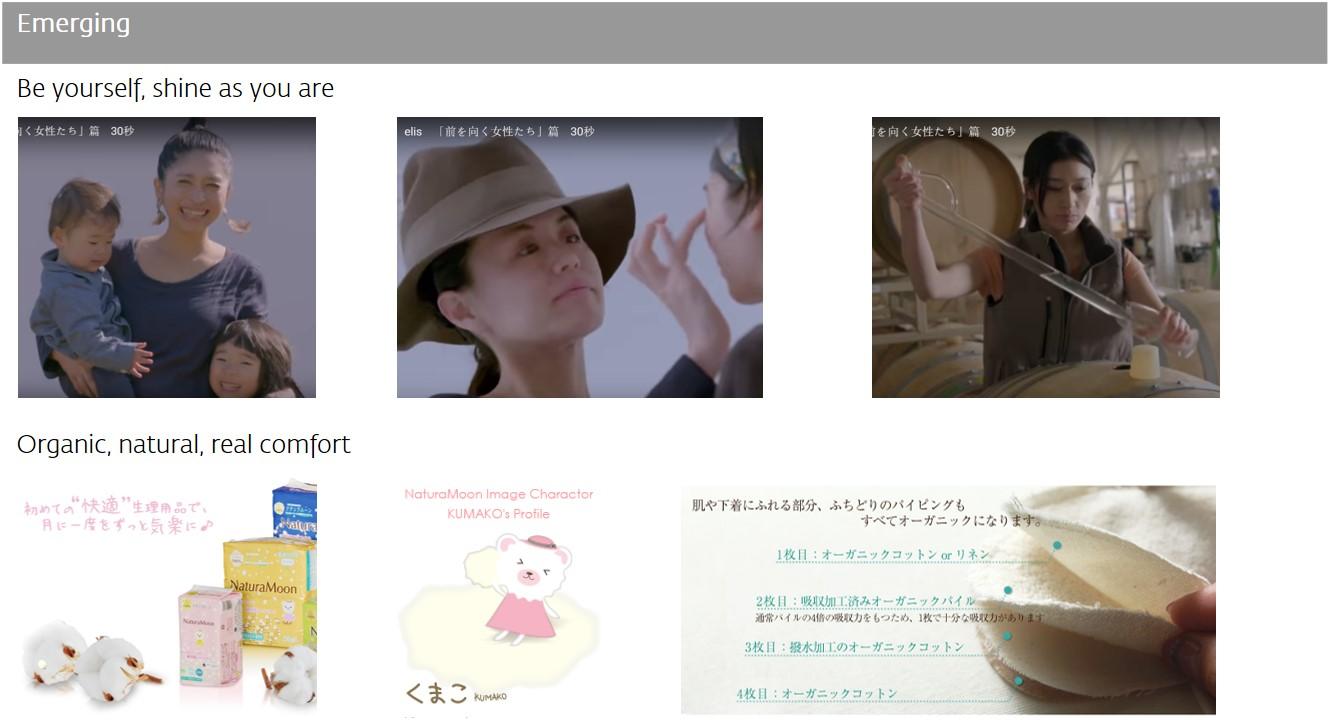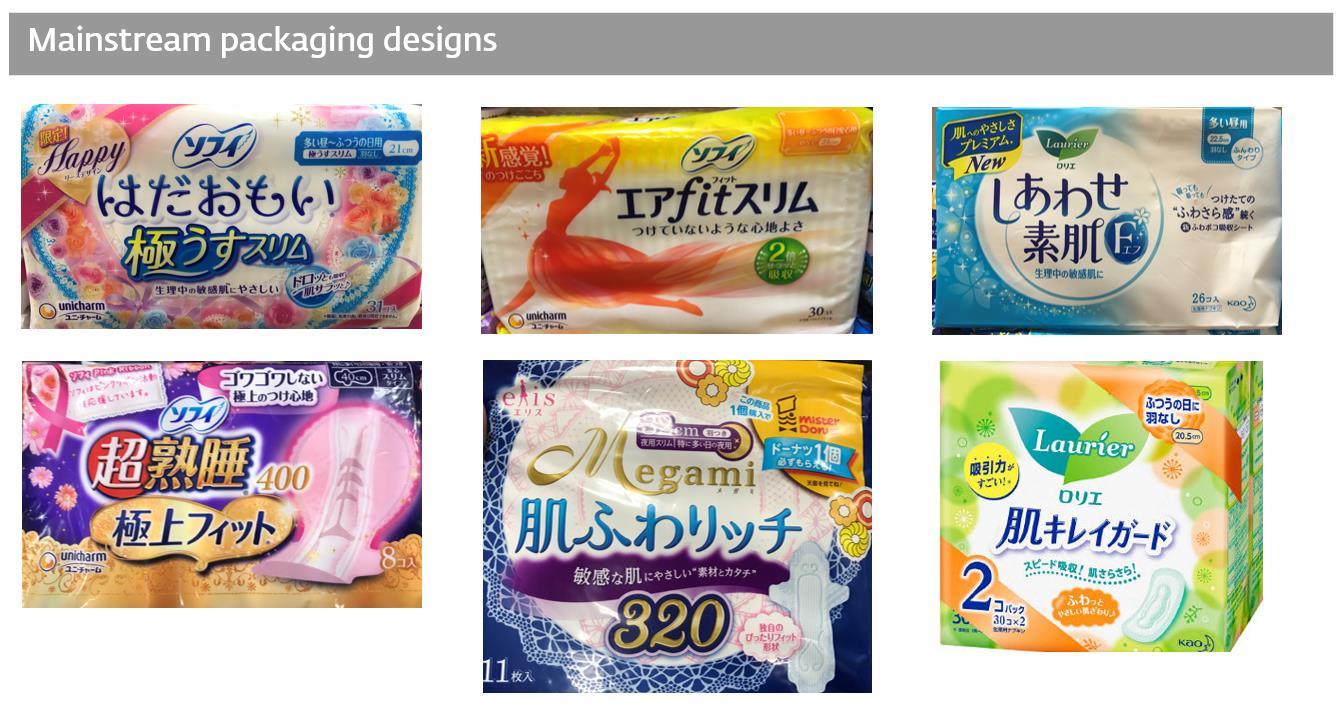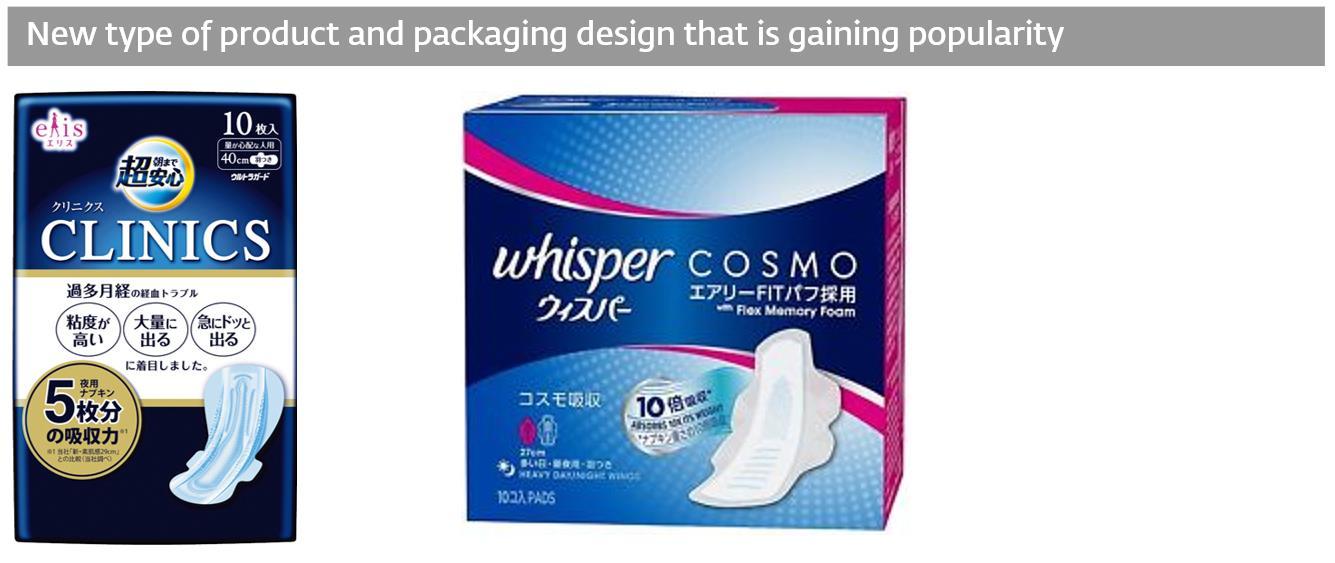

In foreign countries, navigating through product choices can be confusing due to cultural nuances influencing brand communications. Our previous semiotics article delves into the impact of deep-rooted cultural and category codes on consumer perceptions. For instance, if your cultural code associates vibrant colors and dynamic images with detergent brands, a pastel-colored, plain-packaged product may trigger doubt. Explore the intricate world of brand communications and cultural codes for a clearer consumer connection.
In this article, we will look into how femininity is expressed in the Sanitary Napkin category in Japan, and explain why different signs and codes need to be called upon to communicate brand’s intended meaning in each market. This type of cultural understanding is particularly important for international brands as it allows them to be more strategic in their brand communications, and accurately pinpoint opportunities that lead the way forward.
The feminine hygiene market in Japan accounts for approximately USD 900 million (2015). Although the overall market volume in Japan is becoming more difficult to capture year by year, the demand for the premium and high value added product lines that cater to the changing lifestyles of consumers such as working women is increasing.
Given this market situation, the strong players such as KAO, Uni-Charm, P&G and Daio are constantly launching new sub-brands and product brands to seize the market share. Hence, the category is quite developed and competitive; however there is a major conundrum for consumers: it presents a quite homogeneous universe centered around the values on Skin comfort, Fit and Worry-free, and for most consumers it is hard to distinguish from one product to another.
The challenge is then how to find a meaningful innovation angle that can trigger a genuine interest.
For this purpose, we will firstly look into femininity codes in Japan to understand the historically relevant expressions, take a look at how the category communication is evolving in relation to this societal change, and illustrate how brands can stay on top by continuously engaging with their consumers.
The old stereotypes of women in Japan – subservient, courteous, and modest – are outdated. As a society evolves and new generations kick in, the characteristics of women and the surrounding cultural values diversify and set a new course.
However, those old values regarded as stereotypes have deep historical and cultural roots which will, to varying degrees, continue to influence and shape the societal perception of women and thus how femininity is communicated, accepted and interpreted.
In Japan, historically women did hold considerable power as a type of “shaman” – which would have led to an entirely different perception of women and femininity today had it continued. This phenomenon was vanquished, however, when Confucianism and Samurai culture stressed the absolute superiority of men over women. A sentence from Tale of Genji, the most famous and popular novel written in 11th century in Japan, illustrates well the societal view towards women at that time: “If they [women] were not fundamentally evil, they would not have been born women at all”. This perspective partly informed how women behave in modern times, and explains to a certain extent why femininity in Japan is strongly characterized as amiable, allowing for a smooth blend into the male-dominated society without much friction.
To provide a simple visual illustration to this notion, we type the word femininity into Google search in Japanese and French respectively and compare the top images generated. From the above cultural insight, to some degree, now we are able to make sense of the choices of images in communicating a certain concept in different cultural contexts.


Generally speaking, communication in the sanitary napkin category in Japan revolves around gentle and smooth expressions of femininity for ensuring relevance, mostly through contentment and happiness shown from smiling faces and relaxed body postures.

Usually, the shift in the trends of signs and expressions is a reflection of societal and cultural change, and signifies a seismic shift in the evolution of values.


In addition to this emerging communication angle, we witness products and services that offer superior functionality (e.g., extra long lasting) that are diverting from the use of conventional femininity codes on packaging design and that more neutral, medical-like codes are gaining popularity.
Moreover, we see a growing demand for premium organic sanitary napkins and sanitary cloth napkins. The values people seek are slightly shifting or widening, shown by the need for more functional credibility to support their professional lifestyles and a desire to use a product that does not contain any chemicals to embrace a truly healthier lifestyle.


When international brands venture into new markets with robust local competitors and distinct regional needs, as in the case of Japan, understanding the cultural context becomes paramount in brand communications.
Around three decades ago, P&G faced challenges when introducing the Whisper brand to the Japanese market, where dominant local players like KAO held sway. As one of the few international brands in the category, P&G encountered difficulties in resonating with local consumers whose needs differed from those perceived by P&G in its home market. The journey involved substantial investment in consumer research by a team well-versed in local cultural nuances. This approach allowed the brand to navigate the intricate landscape of brand communications in a culturally meaningful way.
What happens when one does not have the financial resources and human capital like P&G for conducting iterative research?
Semiotics provides a valuable lens for brands to navigate the intricate landscape of brand communications. By deciphering cultural nuances in a clear and logical manner, brands gain insights into local contextual elements that foster impactful associations. This tool complements other consumer-based research, helping brands identify culturally acceptable and innovative brand actions. In areas requiring deep local knowledge, semiotics proves essential for strategic communication. Explore the strategic world of brand communications, understanding not just what and how we communicate but also the underlying reasons, through the lens of semiotics.
A Labbrand Group Company © 2005-2024 Labbrand All rights reserved
沪ICP备17001253号-3* Will be used in accordance with our Privacy Policy
To improve your experience, we use cookies to provide social media features, offer you content that targets your particular interests, and analyse the performance of our advertising campaigns. By clicking on “Accept” you consent to all cookies. You also have the option to click “Reject” to limit the use of certain types of cookies. Please be aware that rejecting cookies may affect your website browsing experience and limit the use of some personalised features.